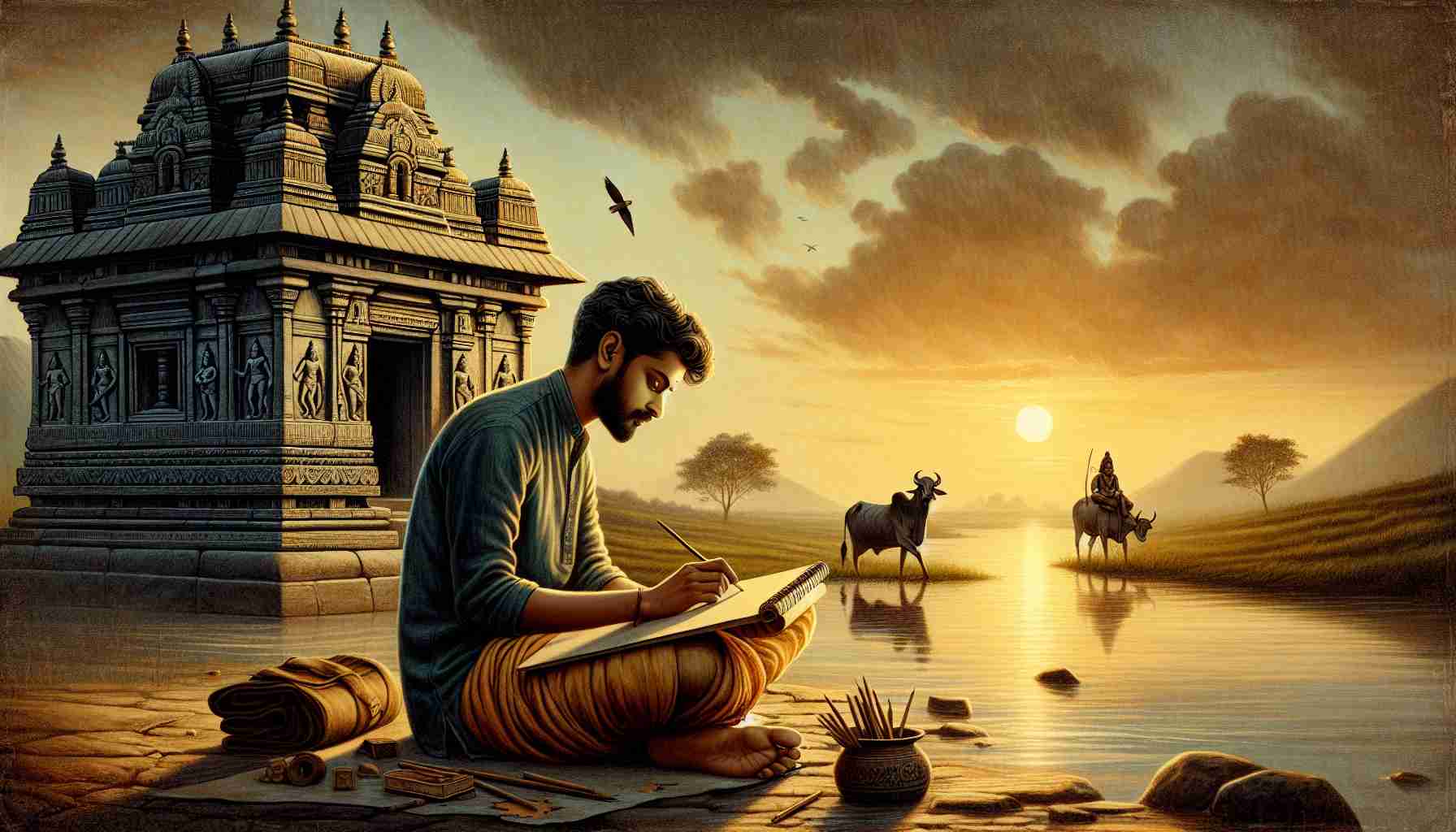

I was twelve when my father first took me to meet Guruji on the banks of the Yamuna. My cousins were already studying in big cities, preparing for engineering and medicine—expectations carved in stone since our births.
But me? I sat quietly in the back of the family van, a sketchbook hidden in my lap. I didn’t care about formulas or exams. I just wanted to draw—temples, trees, the wrinkled wisdom in my grandmother’s face.
My name is Arjun, and I grew up with a name too heavy. “You must be like Arjuna from the Mahabharata,” my uncles would say, patting my head. But no one asked what I actually wanted.
For years, I said nothing. I studied. I played the role. But every time I opened my textbooks, my heart whispered, this isn't you. That whisper got drowned in the noise—college forms, relatives comparing scores, father’s tired sighs after work.
When I turned seventeen, the pressure cracked something inside me. I cleaned my room one evening and found an old sketch—a charcoal drawing of Krishna standing on the battlefield, guiding Arjuna. His eyes in the drawing looked straight into mine, calm but unshakable.
Something stilled in me.
I remembered a verse from the Bhagavad Gita: “Better to fail in one’s own dharma than to succeed in another's” (Gita 3.35). I had read it once in passing. Now it lit up in my chest like a diya in a dark room.
That night, I didn’t sleep. I quietly pulled under the bedsheet and began sketching by torchlight—my hands shakier than ever, but also more alive.
I didn’t run away from home. I didn’t shout or rebel. The next morning, I touched my parents’ feet and said, “I want to study art. Please don’t stop me.” Tears came to my mother’s eyes. My father said nothing for a long time. Then he nodded, slowly.
Not everyone approved. Some relatives still talk behind my back. But now, when I sit in silence with brush and paper, I feel as if Lord Shiva himself is watching through my eyes—destroying all that is false, creating space for truth.
One day, I visited an old temple alone. Inside, a boy no older than ten was drawing Ganesha—our elephant-headed remover of obstacles—with crayons on the floor. His father scolded him, but the boy looked up and smiled at me like we shared a secret.
I smiled back. Tat tvam asi—you are that, the Chandogya Upanishad says. The divine is not out there; it is inwhat we are called to do.
Sometimes, when the world shouts too loudly, I return to that verse. Even Krishna did not fight for the throne—He fought for dharma, truth within.
Now I listen, each day, for my own quiet calling.
And I follow.
I was twelve when my father first took me to meet Guruji on the banks of the Yamuna. My cousins were already studying in big cities, preparing for engineering and medicine—expectations carved in stone since our births.
But me? I sat quietly in the back of the family van, a sketchbook hidden in my lap. I didn’t care about formulas or exams. I just wanted to draw—temples, trees, the wrinkled wisdom in my grandmother’s face.
My name is Arjun, and I grew up with a name too heavy. “You must be like Arjuna from the Mahabharata,” my uncles would say, patting my head. But no one asked what I actually wanted.
For years, I said nothing. I studied. I played the role. But every time I opened my textbooks, my heart whispered, this isn't you. That whisper got drowned in the noise—college forms, relatives comparing scores, father’s tired sighs after work.
When I turned seventeen, the pressure cracked something inside me. I cleaned my room one evening and found an old sketch—a charcoal drawing of Krishna standing on the battlefield, guiding Arjuna. His eyes in the drawing looked straight into mine, calm but unshakable.
Something stilled in me.
I remembered a verse from the Bhagavad Gita: “Better to fail in one’s own dharma than to succeed in another's” (Gita 3.35). I had read it once in passing. Now it lit up in my chest like a diya in a dark room.
That night, I didn’t sleep. I quietly pulled under the bedsheet and began sketching by torchlight—my hands shakier than ever, but also more alive.
I didn’t run away from home. I didn’t shout or rebel. The next morning, I touched my parents’ feet and said, “I want to study art. Please don’t stop me.” Tears came to my mother’s eyes. My father said nothing for a long time. Then he nodded, slowly.
Not everyone approved. Some relatives still talk behind my back. But now, when I sit in silence with brush and paper, I feel as if Lord Shiva himself is watching through my eyes—destroying all that is false, creating space for truth.
One day, I visited an old temple alone. Inside, a boy no older than ten was drawing Ganesha—our elephant-headed remover of obstacles—with crayons on the floor. His father scolded him, but the boy looked up and smiled at me like we shared a secret.
I smiled back. Tat tvam asi—you are that, the Chandogya Upanishad says. The divine is not out there; it is inwhat we are called to do.
Sometimes, when the world shouts too loudly, I return to that verse. Even Krishna did not fight for the throne—He fought for dharma, truth within.
Now I listen, each day, for my own quiet calling.
And I follow.